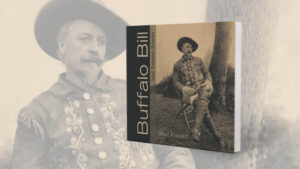The Bowl of Gold still not empty.
Cripple Creek, Colorado, has been labeled the greatest gold camp on earth. Millionaires were made from the ore load. It all happened in 1891 on a small patch of a cattle ranch on the south side of America’s mountain, Pikes Peak. Gold had actually been found in the area back in 1874, but nothing much came of it. But 17 years later, the gold reports of cowboy Bob Womack were finally taken seriously and Cripple Creek soon became the richest gold town in Colorado.
All of this activity, of course, came many years after miner William Green Russell found gold in July 1858 at Dry Creek (now in the Denver suburb of Englewood) and set off what 150 years ago was called the Pike’s Peak Gold Rush (after the most prominent mountain in the region) and was later known as the Colorado Gold Rush of 1859 (the peak year of the rush). Colorado commemorates the 150th anniversary of its gold run in 2009.
Two years in the making, the Pikes Peak Heritage Center opened in the summer of 2007. Built by the city of Cripple Creek, the state-of-the-art interpretive center was designed by then Mayor Ed Libby. City employees and subcontractors leveled the land, donated by the Cripple Creek & Victor Gold Mining Company, and built the structure high on the hill overlooking the old mountain mining camp, which by 1900 had 139 saloons and 14 newspapers.
The 11,600-square-foot Pikes Peak Heritage Center, the first such center in Colorado, offers an array of history, geology, wildlife, mineral collections, mining displays and dioramas. This is the brainchild of graphic designer Maureen Kimmell of Colorado Springs.
“The Pikes Peak Heritage Center project was wonderful to be a part of,” she says. “It’s the first time the history of the world’s greatest gold camp, and surrounding area, has been told in an interactive, dynamic way.” Adds Scott Kerr, director of the center: “It’s important to note that this is an interpretive center, to help visitors learn of the area and provide information for those who want to travel.”
On the first floor, the gem and mineral collection is nothing short of eye-popping, and includes a very rare specimen of blue topaz mined by Walt Rubeck from the Topaz Mountain Gem Mine near Lake George. Miners had initially focused on gold, but the area also has large deposits of topaz, turquoise and amazonite. Some of these mines are again being worked. The Mollie Kathleen Gold Mine, one of the few remaining mines from the boom days, is represented as a model, and built to scale; it takes up a whole wall. The real mine is located across the road and is open for tours.
The center of the main floor exhibit focuses on the history of the mining camp and the early days of Cripple Creek. Displays include the railroad history, the great fires and everyday life in the gold camp. The Historic Photo Wall features original photos that capture all aspects of early Cripple Creek. At the beginning of the linear time table (1891) is a photo of Robert Miller (Bob) Womack, the common cowpoke who discovered the gold deposit that caused the last great gold rush in Colorado. Farther up the time table is a photo of Winfield Scott Stratton, who struck it rich on Battle Mountain and became the first millionaire in the district thanks to Cripple Creek’s gold and a theory he employed called the “Bowl of Gold.” He believed that a volcanic eruption caused the rich veins to be centralized in the Cripple Creek area. The theory, while never proved, paid off in his rich findings and kept miners employed throughout the Depression of 1893 and into the turn of the 20th century. Mining still goes on in the area; with more than $800 million in gold produced so far.
The center’s lower level is devoted to the area’s recreational attractions and includes a few “kiddie rides.” The third floor features wildlife dioramas. Admission is free to the center (on Highway 67), which is open daily. Please visit www. pikespeakheritagecenter.com or call 877-858-4653.
Historian Linda Wommack is the great-great-grandniece of gold discoverer Bob Womack.
Originally published in the August 2008 issue of Wild West. To subscribe, click here.




